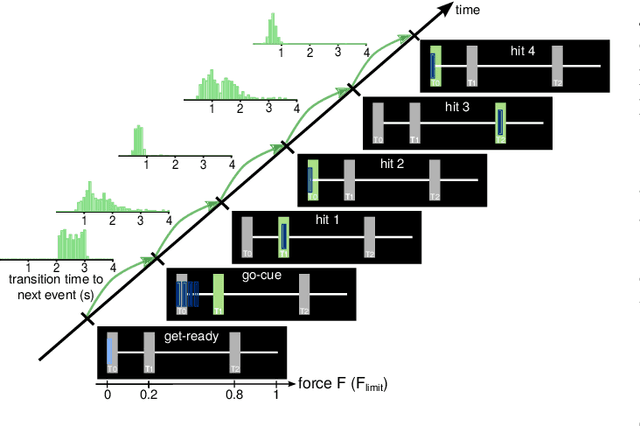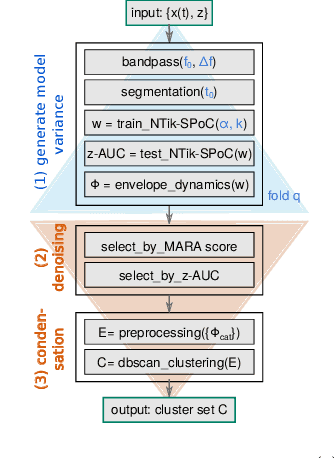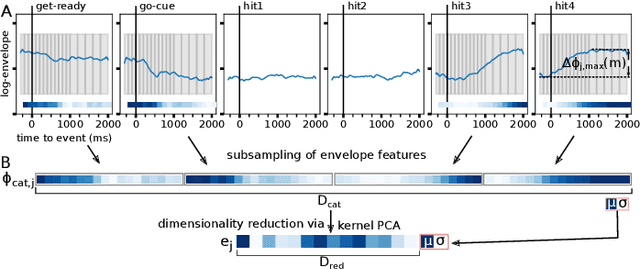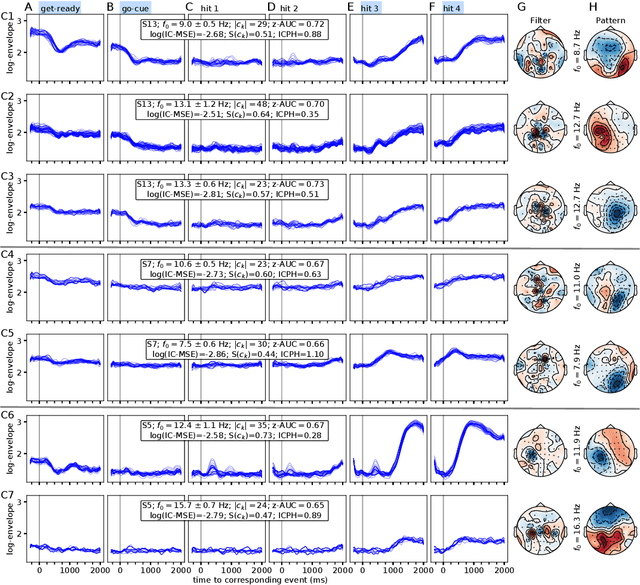Method to assess the functional role of noisy brain signals by mining envelope dynamics
Paper and Code
Apr 27, 2018



Data-driven spatial filtering approaches are commonly used to assess rhythmic brain activity from multichannel recordings such as electroencephalography (EEG). As spatial filter estimation is prone to noise, non-stationarity effects and limited data, a high model variability induced by slight changes of, e.g., involved hyperparameters is generally encountered. These aspects challenge the assessment of functionally relevant features which are of special importance in closed-loop applications as, e.g., in the field of rehabilitation. We propose a data-driven method to identify groups of reliable and functionally relevant oscillatory components computed by a spatial filtering approach. Therefore, we initially embrace the variability of decoding models in a large configuration space before condensing information by density-based clustering of components' functional signatures. Exemplified for a hand force task with rich within-trial structure, the approach was evaluated on EEG data of 18 healthy subjects. We found that functional characteristics of single components are revealed by distinct temporal dynamics of their event-related power changes. Based on a within-subject analysis, our clustering revealed seven groups of homogeneous envelope dynamics on average. To support introspection by practitioners, we provide a set of metrics to characterize and validate single clusterings. We show that identified clusters contain components of strictly confined frequency ranges, dominated by the alpha and beta band. Our method is applicable to any spatial filtering algorithm. Despite high model variability, it allows capturing and monitoring relevant oscillatory features. We foresee its application in closed-loop applications such as brain-computer interface based protocols in stroke rehabilitation.
 Add to Chrome
Add to Chrome Add to Firefox
Add to Firefox Add to Edge
Add to Edge